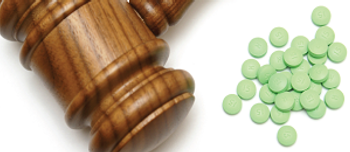
Pharmacists providing direct patient care should stay alert of serious blood exposures (BE).

Pharmacists providing direct patient care should stay alert of serious blood exposures (BE).

An increasing number of adults receiving prescription stimulant medications challenge the notion that ADHD is a children's condition and create new obstacles for pharmacists.

Clinical pharmacists included in team-based interventions can reduce the proportion of potentially inappropriate medications dispensed to elderly patients in the emergency department.

Pharmacists need to balance real-world expectations and the ideals of the profession.

Opioids and barbiturates are commonly prescribed as first-line migraine treatments, even though clinical guidelines recommend them only as a last resort.

The Office of the Assistant Secretary for Planning and Evaluation released an analysis on the efforts of pharmaceutical companies to thwart generic competition as the market exclusivity period of one of its brand name drugs nears expiration.

Here are new drugs for 2015 pharmacists can expect to handle.

The total cost of health must be considered in light of a potential cure.

A new app called Maven allows women to access a health care professional on their smartphone.

Health-system pharmacists can play a pivotal role in ensuring medication adherence among anticoagulated patients during transitions of care.

High costs associated with new chronic hepatitis C virus (HCV) treatments should prompt pharmacists to reconsider their formula for determining the drugs' worth.

Legislation would allow pharmacists to receive payment for their care services.

Framework in place to identify suspected products and report illegitimate products.

The federal Drug Quality and Security Act was signed into law in 2013 with the intent to hold pharmacy stakeholders accountable for identifying suspect drug products and reporting related issues.

Provider status legislation may be the signature pharmacy policy issue of 2015.

Patients are less likely to remain on generic medications when physical attributes of drugs change.

Health-system pharmacists are facing inevitable challenges to ethics and autonomy embedded in their evolving everyday practice.

Could changes in the physical attributes of generic drugs affect patient adherence? The FDA seeks to survey pharmacists and patients to find out.

Patients who received extensive medication therapy management after discharge experienced significantly lower readmissions.

Pharmacy-based transition of care (TOC) interventions that include post-discharge medication therapy management (MTM) services are strongly correlated with reduced hospital readmissions.

A West Virginia high court's decision to allow drug abusers to sue pharmacists could have a far-reaching influence on controlled substance dispensing.

Cost of more than 1200 generic drugs jumped by an average of 448% between July 2013 and July 2014.

E-prescriptions can reduce the amount of time pharmacists dedicate to the prior authorization process.

In-hospital retail pharmacies provide pharmacists with direct access to both physicians and patients.

Legislation has been introduced in Congress to rein in skyrocketing generic drug prices.

West Virginia's highest appellate court recently ruled prescription drug abusers can sue pharmacists for enabling their addictions.

Noting national drug shortages often disproportionately affect pediatric patients, the Pediatric Pharmacy Advocacy Group (PPAG) is encouraging the FDA to include child-specific considerations in its policies for preventing and mitigating drug shortages.

Electronic prescribing technology is permitting pharmacists to focus less on administrative tasks and more on providing direct patient care.

Changes could decrease future program revenue and increase compliance obligations.

Health-systems leaders fear that a scaled-back 340B Federal Drug Pricing Program would hurt the very patients it was designed to benefit.